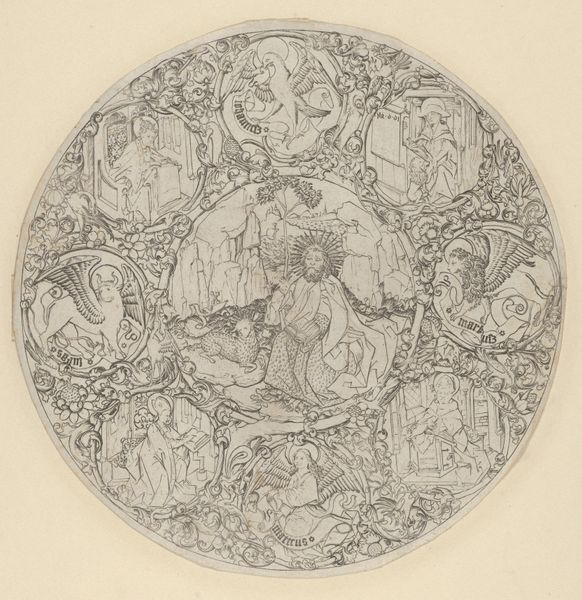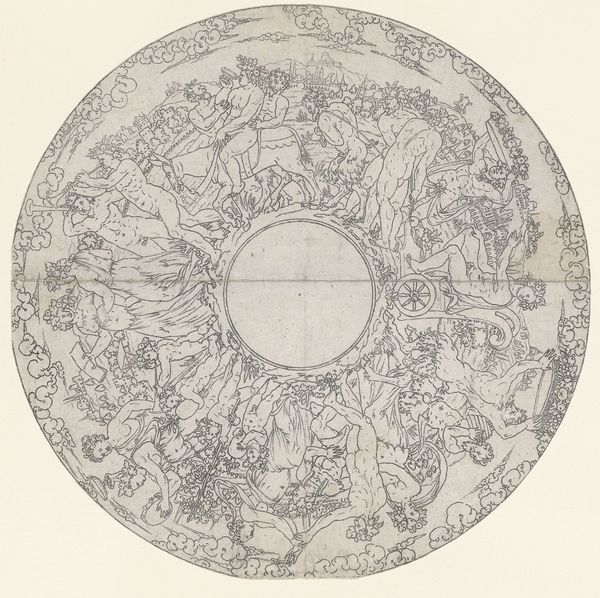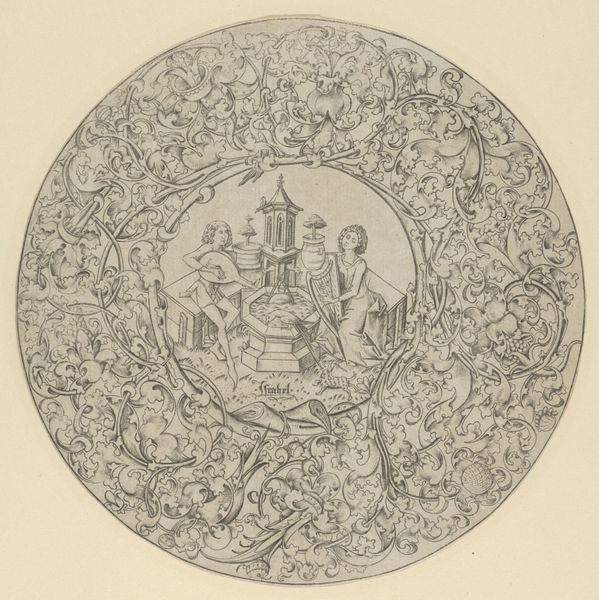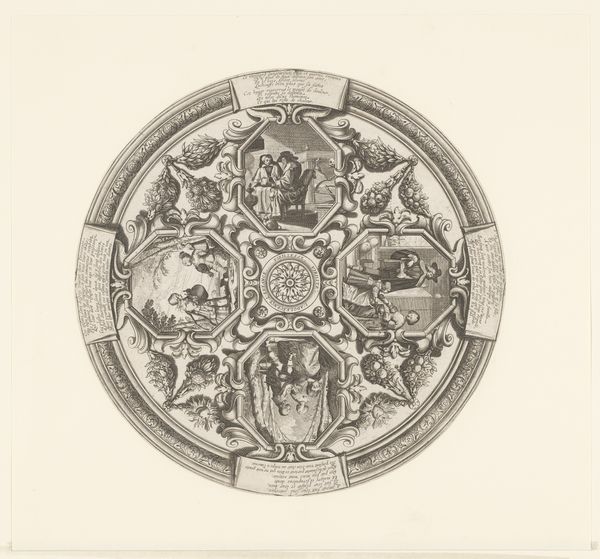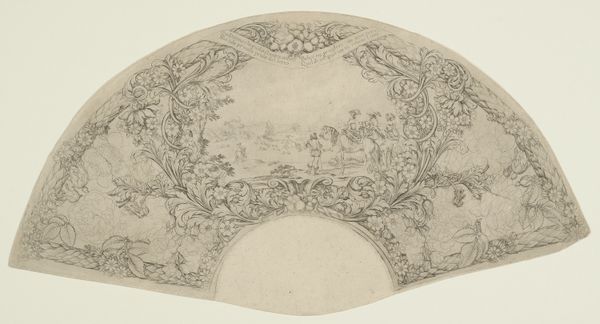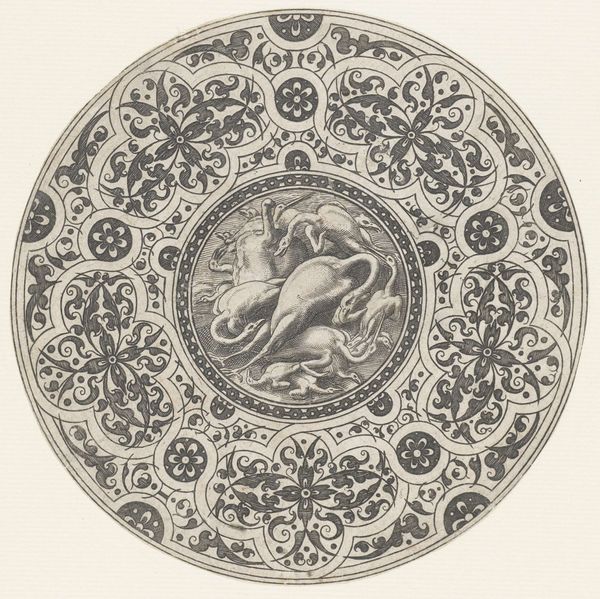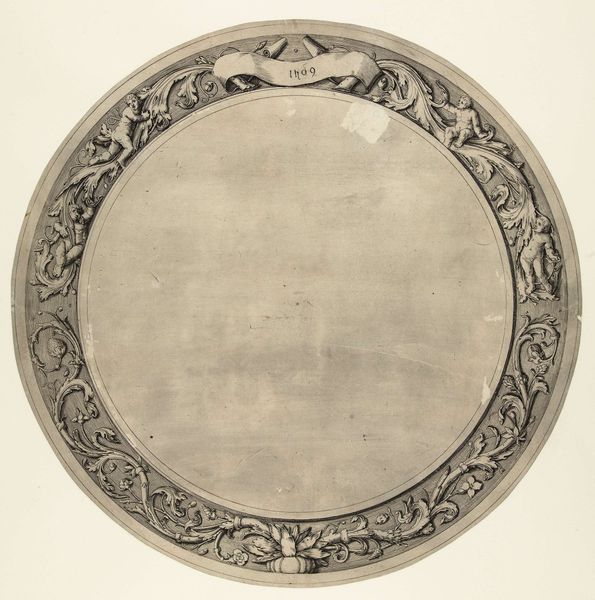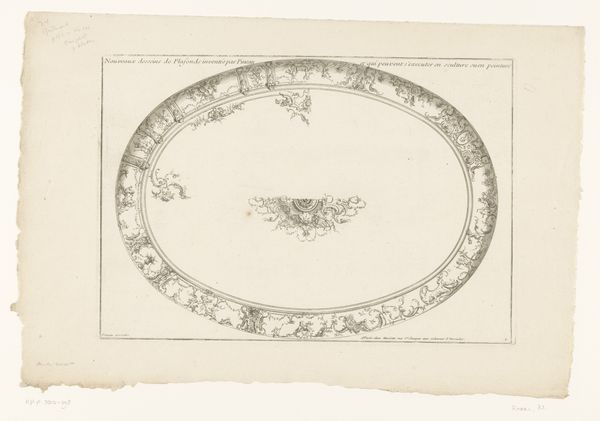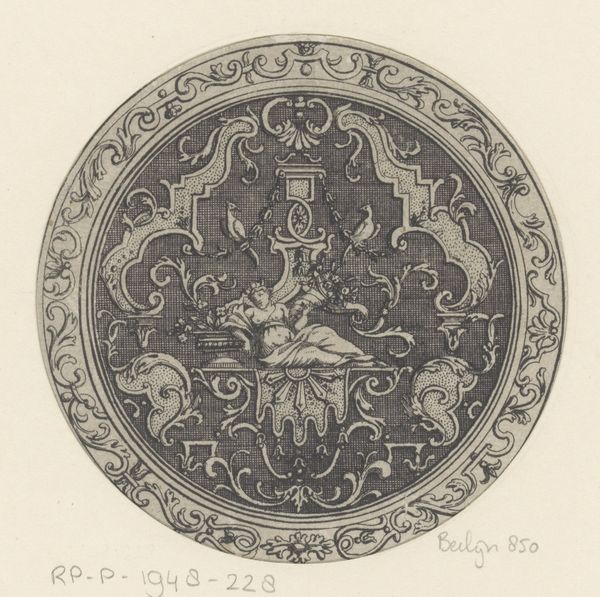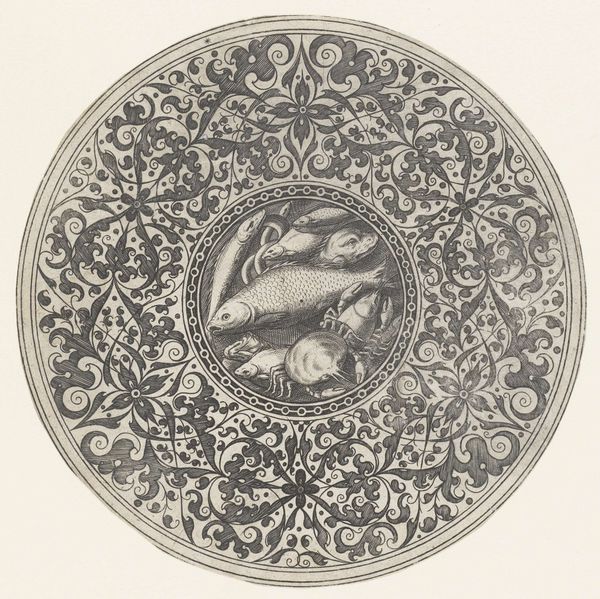
drawing, ink, engraving
#
drawing
#
light pencil work
#
baroque
#
pen drawing
#
pen illustration
#
pen sketch
#
pencil sketch
#
old engraving style
#
ink
#
geometric
#
pen-ink sketch
#
pen work
#
sketchbook drawing
#
pencil work
#
decorative-art
#
engraving
Copyright: Rijks Museum: Open Domain
This octagonal plate by Hans Janssen, dating from the early 17th century, is made using etching, a printmaking technique that democratized image production in its day. The process begins with coating a metal plate with a waxy, acid-resistant substance. The artist then scratches an image into this coating, exposing the metal. When acid is applied, it bites into the exposed lines, creating grooves. These grooves hold ink, which is then transferred to paper under pressure. What’s fascinating about etching is its flexibility. Unlike engraving, which demands immense strength and precision, etching allows for a more fluid, spontaneous line. This plate showcases Janssen’s skill, with its elaborate decorative elements of mythological scenes, cherubs, and floral motifs. Consider the labor that went into the creation of the original plate; these are reproduced for mass consumption. Etching blurred the lines between artistry and industry, enabling wider access to art and ideas, and changing what art could be.
Comments
No comments
Be the first to comment and join the conversation on the ultimate creative platform.
